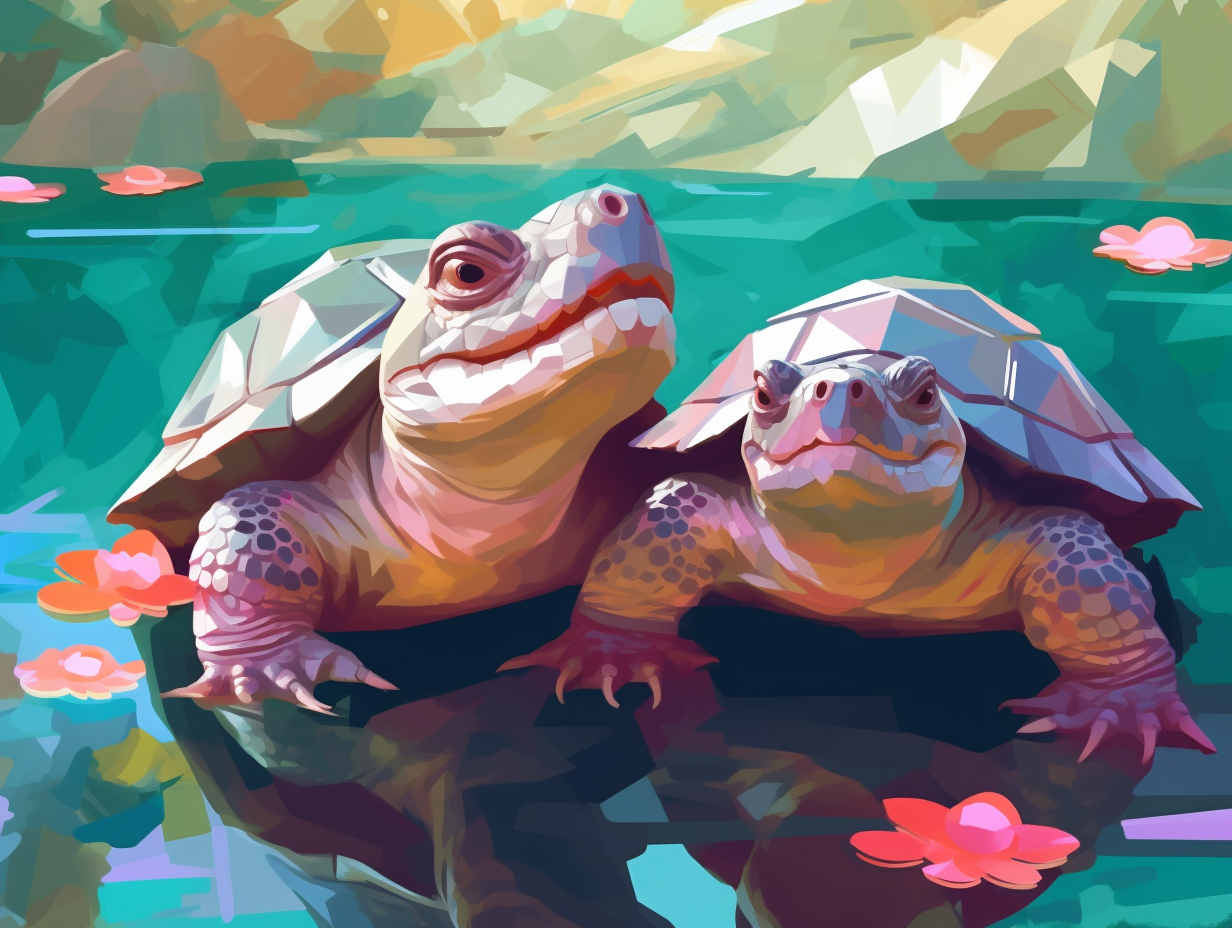Discover the Colorful World of Painted Turtles: Top 8 Fun Facts You Can't Miss

1. Turtle Anti-Freeze
These little aquatic Michelangelos couldn't care less about the cold: painted turtles have their own "turtle anti-freeze" running in their veins, enabling them to hibernate at the bottom of icy waters and survive harsh winters. Thanks to this superpower and their impressive adaptability to human-disturbed habitats, they've secured the title of North America's most abundant turtle species.
Source => en.wikipedia.org
2. Unconventional Hibernation Breathing
When painted turtles play "Hold Your Breath," they're not just regular party animals, they're full-on hibernation beasts: These colorful little champions can snooze underwater for months by slowing down their metabolism and opting for some unconventional breathing methods with their cloaca - that's right, their all-purpose waste and reproduction station!
Source => fpdcc.com

Did you know that a prehistoric turtle was as big as a smart car and weighed up to two tons? Discover the fascinating story of the gigantic Stupendemys!
=> Fun Facts about Turtles
3. Frozen Breath-holding Champs
Who said turtles were slow pokes? When it comes to surviving icy winters, painted turtles could certainly give "Frozen" characters a run for their money: These colorful shelled wonders can hold their breath for a whopping 147 days straight, braving anoxia and regulating their metabolism like champs as they hang out in their frosty pond and creek hideaways.
Source => vetmed.illinois.edu
4. Stinky Turtle Self-Defense
Hold your noses and grab your turtle shells, folks: the painted turtle is here to teach us about the art of self-defense, stinky-style! Seriously though: when in danger, these clever critters release a repugnant odor from their musk glands, effectively repelling predators and ensuring their escape.
Source => solitudelakemanagement.com

5. Frozen-Food Cleanse Survivors
While their fellow pond-dwellers might not appreciate it, you could say painted turtles participate in a frozen-food cleanse each winter, with the help of their own internal smoothie: They can shift their metabolism when oxygen runs low, turning their bodily fluids into an acidic concoction that dissolves calcium from their shells to ward off any ill effects. Talk about a detox plan for the ages! In reality: Painted turtles have the ability to safely survive in frozen ponds by lowering their metabolism and using shell calcium to neutralize the acidic toxins they produce during this process.
Source => portercountyparks.org
6. Temperature-Sex Determination
When Mother Nature decided to play "too hot, too cold" with baby showers: Painted turtles have temperature-dependent sex determination, with incubation temperatures of 78-86 degrees Fahrenheit producing both males and females, while warmer temperatures lead to female domination and cooler temps create a male majority.
Source => animals.mom.com
7. Hatchling Roulette
Ladies and gents, gather 'round and place your bets on nature's own game of "Hatchling Roulette": The temperature at which painted turtle eggs are incubated actually determines their sex! Nesting eggs at cool and breezy 71-78.8°F yields more strapping young lads, while cranking up the heat to a toasty 86-89.6°F brings forth a squad of lovely ladies. Who knew temperature control was the all-powerful matchmaker in the turtle world?
Source => a-z-animals.com
8. Aquatic Picassos in Danger
Painted turtles are known for their fabulous, Van Gogh-esque shells and their unique ability to avoid cougar attacks by disappearing into the water: these colorful critters boast a 40-year lifespan in the wild while handling motherhood like a pro with double egg deposits per year. But be warned – these aquatic Picassos are vulnerable to habitat loss and roadkill tragedies, so let's preserve their world and drive cautiously around their watery abodes.
Source => portal.ct.gov
Related Fun Facts




















